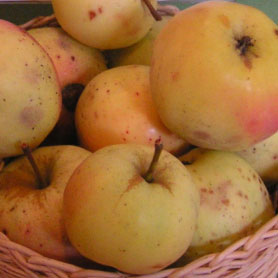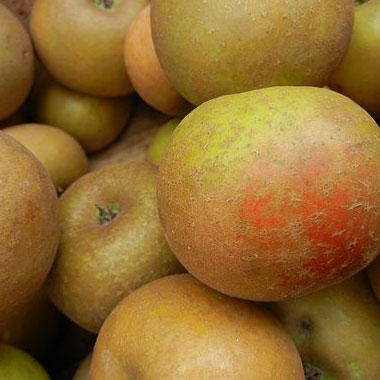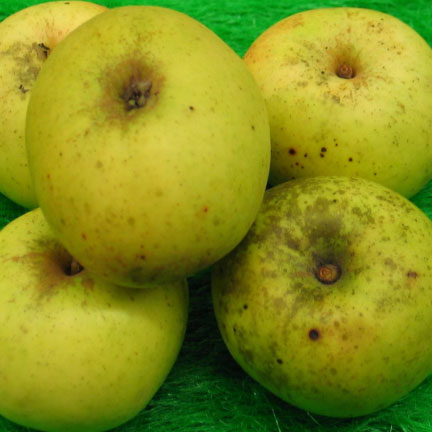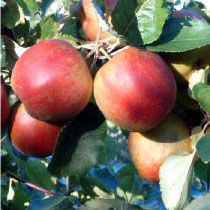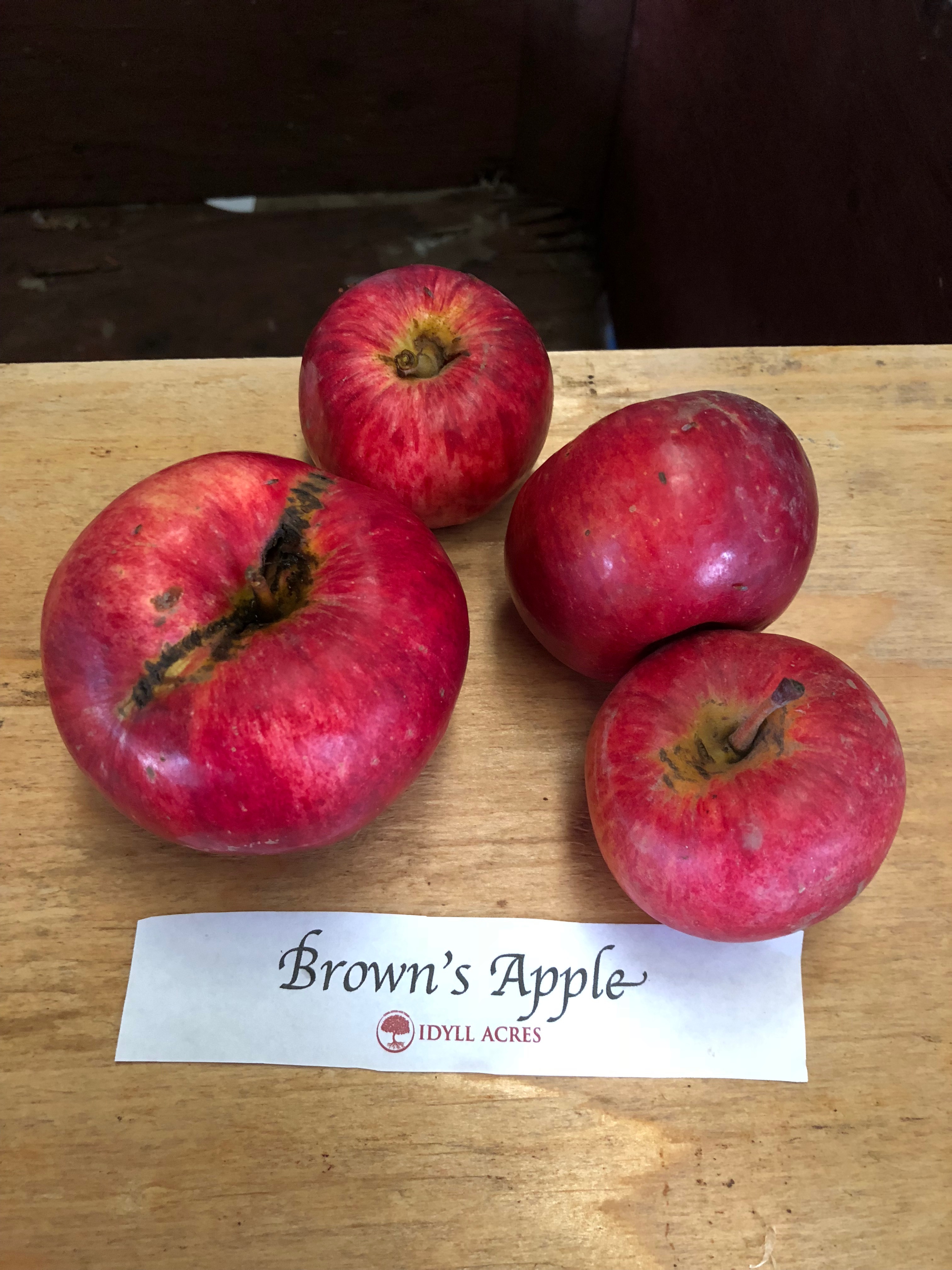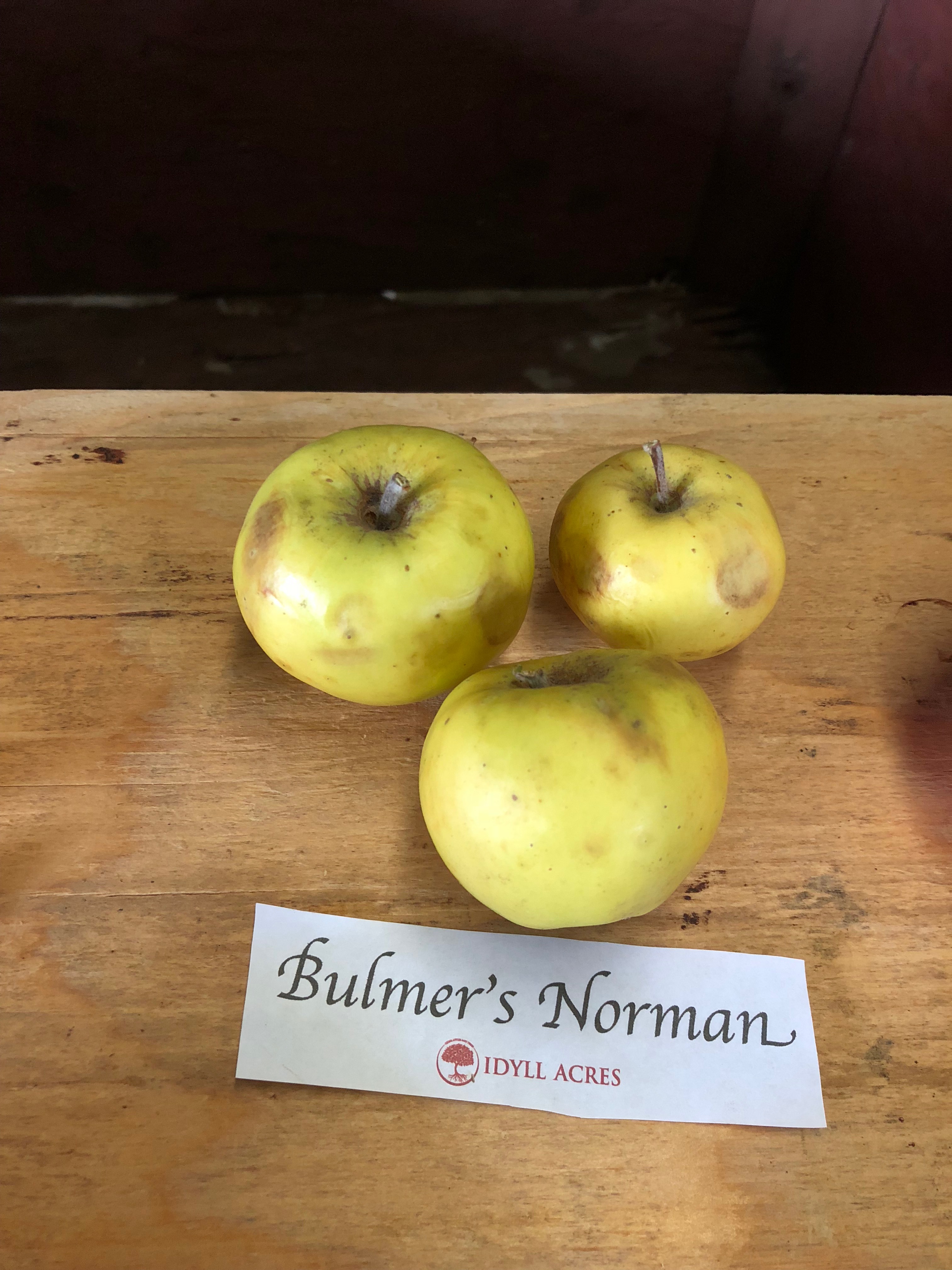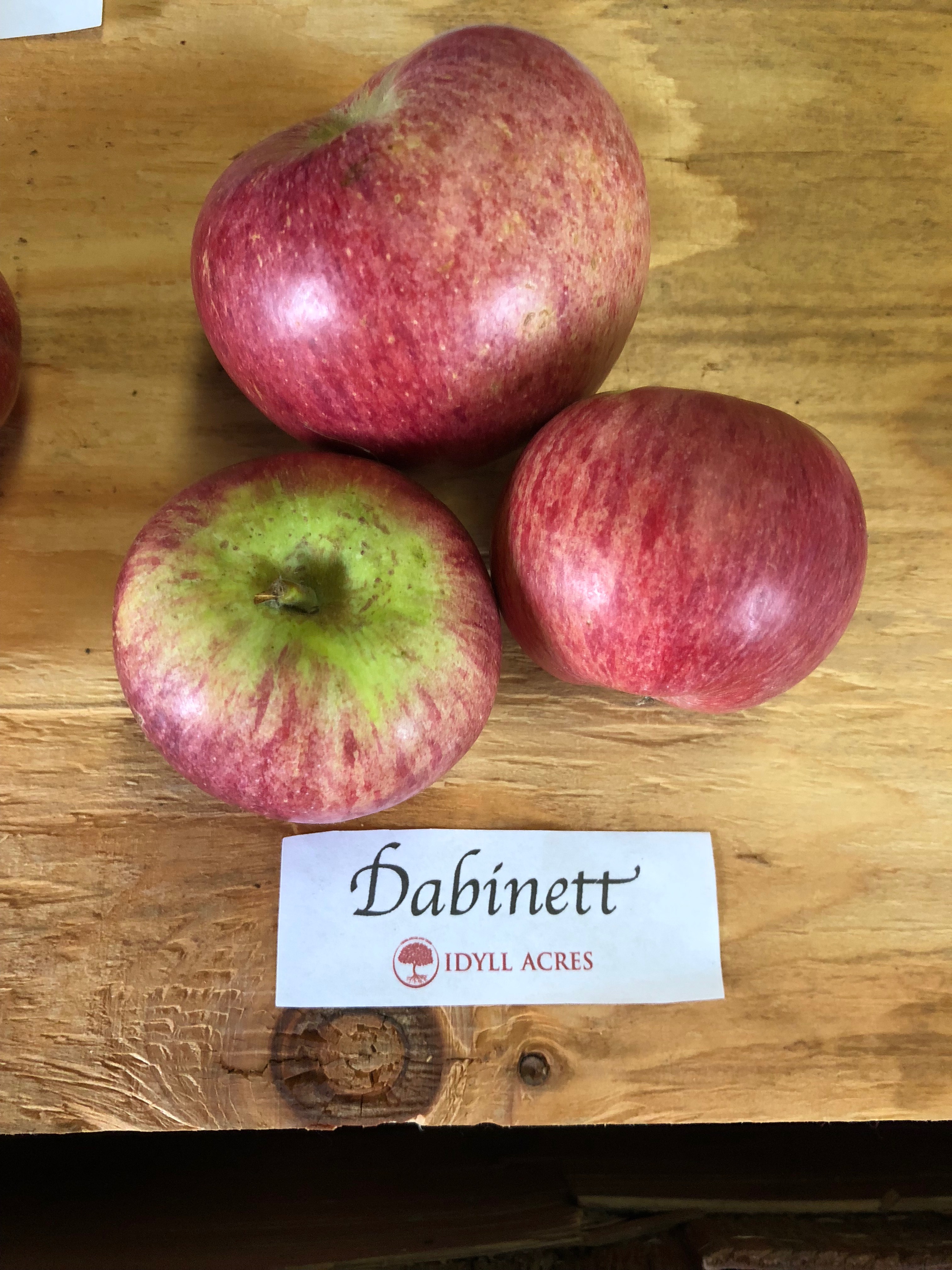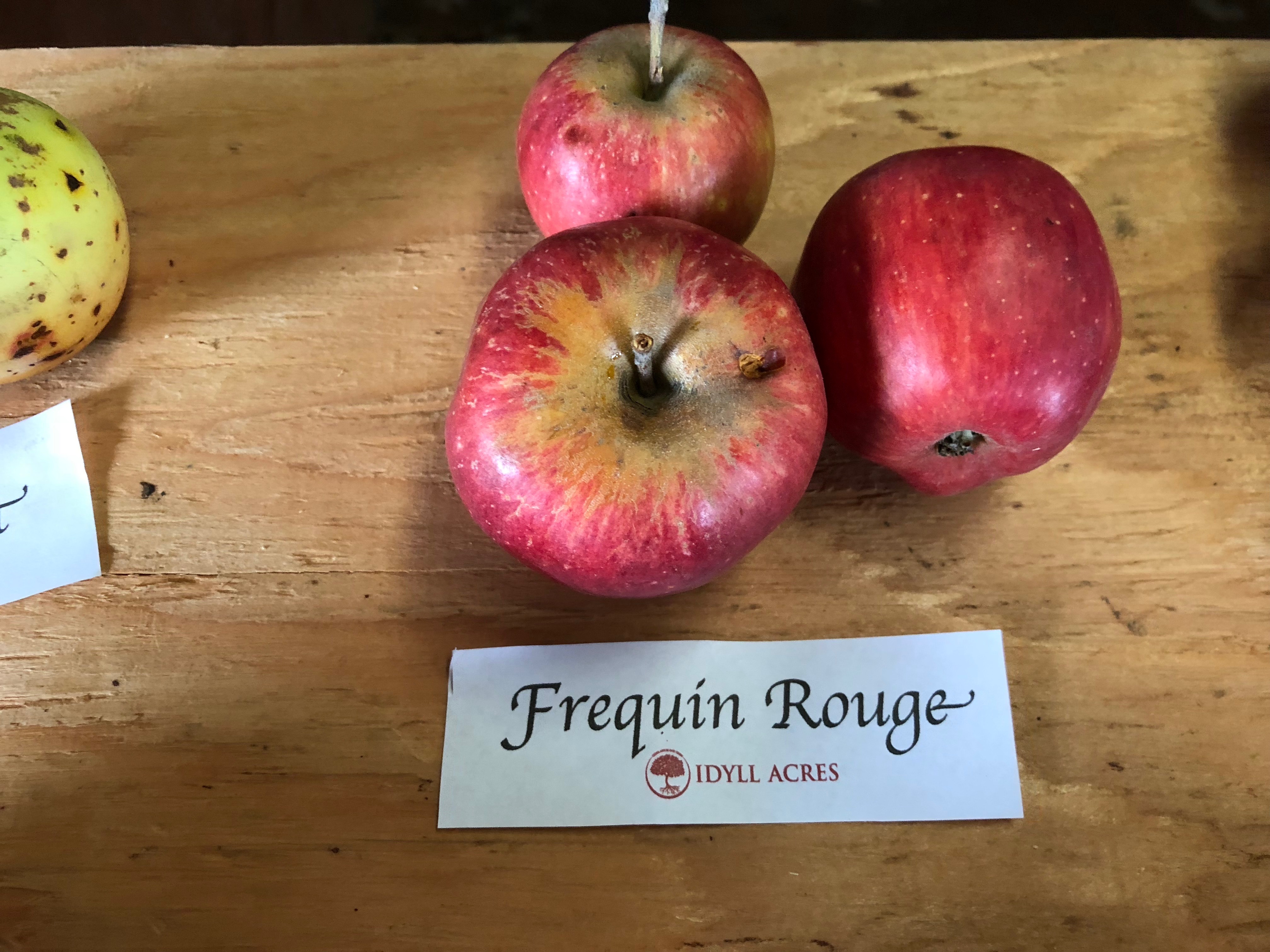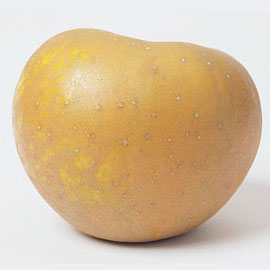Showing 1–12 of 37 results
-
Amere de Berthecourt
Apples FranceOld French bittersweet variety. Green yellow fruit, sometimes with a pink blush. If allowed to ripen fully in Oregon’s hot summer climate, will attain high sugar level and bitter tannins will mellow. If you’re hoping to make a keeved (or similar) cider, which retains some residual sweetness and balanced sweet tannins, this apple should be in your blend.
-
Ashmead’s Kernel
Apples EnglandOne of the great “sharps”. Highly aromatic, juicy apple with high sugar + acid levels. Wonderful to eat fresh and perfect in cider. Very old English variety. Keeps long. First time you taste it fresh you’ll be stunned.
-
Bedan
Apples FranceShort description goes here. Short description goes here. Short description goes here. Short description goes here.
-
Belle de Boskoop
Apples HollandDutch heirloom. Very large apple. Very sharp juice makes it an excellent blender for low-acid bittersweet apple juice. Ripens early mid season. Top quality culinary apple. Think apple tarts
-
Brown Snout
Apples EnglandBritish bittersweet variety. Turns yellow as it ripens and bears the distinct brown nose (snout) making it unmistakable. Juice is dark and rich. Becoming a standard in the Northwest.
-
Brown’s Apple
Apples EnglandThis traditionalsharp British cider apple is loaded with lemon-like acidity and deep honey flavors (if you let it ripen). Just a touch of astringency makes it capable of single-variety cider, but it is best (in our experience) for adding freshness and honey when blended with late bittersweet apples that score high on caramel-butterscotch notes. Apple turns a brilliant deep red when ripe. Tree is vigorous but sets a heavy crop almost too easily and needs thinning management when young.
-
Bulmer’s Norman
Apples EnglandEarly season British bittersweet with French ancestry. Very juicy for a bittersweet. Ripe fruit has strong tropical notes — pineapple and mango. Bitterness will mellow sharply if fruit is allowed to ripen all the way to deep spotted yellow. Highly underrated apple in the UK, but results in Oregon have been promising.
-
Dabinett
Apples EnglandEnglish. Now considered almost the “standard” bittersweet apple for cider, reliable in every way: good yields every year, excellent tannic juice. Trees are weak cultivars and need care in early years to reach maximum potential.
-
Foxwhelp (fauxwhelp, American Foxwhelp)
Apples EnglandNot the small British apple traditionally known as Foxwhelp. The variety as commonly found in N. America is a large eraly season bittersharp apple. Lends excellent sharp juice with some tannin to early season blends.
-
Frequin Rouge
Apples FranceSmall, deep red French bittersweet variety. One of the key apples used by cider mkers in Brittany (along with Kermerrien and Marie Menard). Rich, butterscotch juice. Productive tree, Sweet and mild tannins. Keeved cider absolute must
-
Geeveston Fanny
ApplesTasmanian heirloom dessert apple. Juicy, fresh acidic apple with clean aromatics. Productive tree. Deep, purplr-red apples seem to hang forever on the trees. Useful acidic and aromatic addition to cider that is available nearly all pressing seasons (early, mid, late) making it an ideal apple for orcharists needing acidity and freshness to offset high pH bittersweets.
-
Golden Russet
Apples United StatesAmerican. Excellent juice quality. Very flavorful and hits the key high notes for sweetness and acidity. Delicious eaten fresh and coveted by cidermakers

